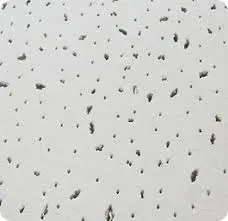- Afrikaans
- Albanian
- Amharic
- Arabic
- Armenian
- Azerbaijani
- Basque
- Belarusian
- Bengali
- Bosnian
- Bulgarian
- Catalan
- Cebuano
- Corsican
- Croatian
- Czech
- Danish
- Dutch
- English
- Esperanto
- Estonian
- French
- German
- Greek
- Hindi
- Indonesian
- irish
- Italian
- Japanese
- Korean
- Lao
- Malay
- Myanmar
- Norwegian
- Norwegian
- Polish
- Portuguese
- Romanian
- Russian
- Serbian
- Spanish
- Swedish
- Thai
- Turkish
- Ukrainian
- Uzbek
- Vietnamese
Δεκ . 10, 2024 07:46 Back to list
Ceiling Access Panels for Suspended Ceiling Systems and Easy Maintenance Solutions
Understanding Suspended Ceiling Access Panels A Comprehensive Guide
Suspended ceiling access panels are essential components in modern building design, particularly in commercial spaces. These panels provide convenient access to the areas above suspended ceilings, which often house vital infrastructure such as electrical wiring, plumbing, and HVAC systems. In this article, we will explore the types, benefits, installation methods, and maintenance of suspended ceiling access panels, thus offering a comprehensive overview of their importance in both functional and aesthetic aspects of building design.
Types of Suspended Ceiling Access Panels
Suspended ceiling access panels come in various designs to cater to different needs and environments. The most common types include
1. Hinged Access Panels These panels are designed with hinges, allowing them to swing open for easy access. They are often used in areas where frequent access is necessary, such as maintenance rooms or laboratories.
2. Removable Access Panels These panels are designed to be easily removed without the need for tools. They are typically used in locations where access is occasional but still requires a straightforward removal process.
3. Flush-In Ceiling Access Panels These panels are designed to be flush with the ceiling tiles, creating a seamless look. They are ideal for spaces where aesthetics are as important as functionality, such as in offices or conference rooms.
4. Fire-Rated Access Panels Some environments require fire-rated access panels, which are designed to withstand high temperatures and help maintain fire barriers in building codes. They are essential in commercial and industrial settings to ensure safety compliance.
5. Acoustic Access Panels These panels are specifically designed for sound-sensitive areas. They minimize sound transfer between spaces, making them ideal for offices, recording studios, or any environment where noise reduction is a priority.
Benefits of Suspended Ceiling Access Panels
The advantages of incorporating suspended ceiling access panels into a building’s design are numerous
1. Ease of Access As the name implies, access panels provide easy access to the space above the ceiling. This is crucial for maintenance, repairs, or upgrades without disrupting the occupied space below.
2. Aesthetics Modern access panels can be designed to blend seamlessly with the ceiling tiles, ensuring that the overall aesthetics of the building remain intact. This is especially valuable in commercial environments where appearance matters.
suspended ceiling access panels

3. Safety and Compliance Many panels are designed to meet strict building codes, including fire safety regulations, ensuring that the overall structure remains compliant with local laws.
4. Versatility Access panels can be used in a variety of settings, from residential homes to large-scale commercial buildings, making them a versatile solution for many different applications.
5. Cost-Effectiveness By allowing easy access to essential systems, access panels can save businesses time and money on maintenance. This easy access reduces labor costs and minimizes downtime for repairs.
Installation and Maintenance
Installing suspended ceiling access panels is relatively straightforward, but it requires attention to detail. Here are some general steps involved in the installation process
1. Determine the Location Identify the areas that require access. This will typically involve consultation with maintenance staff to ensure the panels are strategically placed.
2. Cutting the Ceiling Grid Depending on the type of panel, you may need to cut the ceiling grid to accommodate the panel dimensions.
3. Securing the Panel Once cut, the panel should be secured in place. Some panels are designed to clip into the grid, while others may require screws or other fasteners.
4. Testing the Access After installation, ensure that the panel functions correctly. It should open and close easily, providing unobstructed access to the space above.
Regular maintenance of access panels is also important. This includes checking for signs of wear and tear, ensuring hinges or mechanisms are functioning properly, and cleaning the surfaces to maintain appearance.
Conclusion
In conclusion, suspended ceiling access panels are a vital aspect of modern buildings, offering a blend of functionality, safety, and aesthetic appeal. With various types available to suit different needs, and a straightforward installation and maintenance process, these panels enhance building design and facility management. As we continue to see advances in building techniques and materials, access panels will undoubtedly remain an integral component of efficient building design and management.
-
Transform Interiors with PVC Gypsum Ceiling: A Stylish, Durable, and Moisture-Resistant SolutionNewsMay.19,2025
-
The Smart Interior Upgrade: Discover the Durability and Versatility of Gypsum Ceiling Access Panel SolutionsNewsMay.19,2025
-
The Smart Choice for Interior Design: Discover the Value of PVC Gypsum Ceiling SolutionsNewsMay.19,2025
-
Mineral Fiber Ceiling Tiles: The Smart Blend of Performance and AestheticsNewsMay.19,2025
-
Mineral Fiber Ceiling Tiles: The Superior Choice Over Gypsum for Sound and Fire SafetyNewsMay.19,2025
-
Mineral Fiber Ceiling Tiles: Eco-Friendly Strength and Style for Every CeilingNewsMay.19,2025







